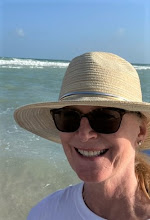
 Although the name of the film doesn’t really fit its contents, the author of the novel on which this movie is based, Leslie T. White, was a lifelong member of the law enforcement community, including a stint as an investigator for the Los Angeles District Attorney’s office; and it shows. The genre is “police procedure,” not a “whodunit.” At times it reminded me of “Dragnet” (debuted on radio in 1949 and on TV in 1951), only with Edward G. Robinson in for Jack Webb, with more personality, and a much larger, more entertaining cast.
Although the name of the film doesn’t really fit its contents, the author of the novel on which this movie is based, Leslie T. White, was a lifelong member of the law enforcement community, including a stint as an investigator for the Los Angeles District Attorney’s office; and it shows. The genre is “police procedure,” not a “whodunit.” At times it reminded me of “Dragnet” (debuted on radio in 1949 and on TV in 1951), only with Edward G. Robinson in for Jack Webb, with more personality, and a much larger, more entertaining cast.This is one day in the life of Captain Barnaby (Robinson). Although the role held no challenges for Robinson, he played it well as the all-wise, always calm, head of the Vice Squad. In one interesting scene, Robinson is being interviewed for TV and is a little nervous. He asks, “Is it alright to smoke in the interview?” Interviewer: “That’s what we want!” Good old, early TV/movie days.
Several crimes need to be unraveled and Robinson is just the one to do it, with the help of his competent police force. The criminals start out equal to the task but will they fall to their deserved fates or outmaneuver the police? This criminal entity has some of the better scenes in the movie and is led by the menacing Edward Binns (Juror #6 in “Twelve Angry Men”). Adam Williams is remarkable to watch as the conflicted, dramatic maybe-criminal. And Lee Van Cleef, everyone’s favorite villain, is seen here in his second year of movie-making.
Two favorite character actors, Barry Kelley and Porter Hall, play a defense attorney and a hapless “victim,” respectively. Both roles are funny and well-played. Look for high-voiced Percy Helton in one of the several subplots, and Paulette Goddard, as a lovely Madam who has good chemistry and repartee with Robinson. (Goddard made only a few more movies and TV appearances after this. She also had a few very famous husbands including Charlie Chaplin, Burgess Meredith, and Erich Maria Remarque.)
The real stars are the cinematography (Joseph F. Biroc) and location. This is black and white, 1950s Los Angeles, complete with cars - it’s not a made-in-the-studio movie. Great use of light and shadows and excellent camera angles, particularly for the criminals and their activities, give this a film noir look. And for all the easy banter, the film provides considerable suspense toward the end, suitably set in a condemned, concrete building. Dramatic, tension-laden music (Herschel Burke Gilbert) underscores the criminals’ activities throughout and was otherwise absent.
Look for the easy way police had back then with their methods. Too early for Miranda rights, but not too soon for manipulations here and there, a few scams, and maybe a little blackmail; this was police business as usual, and an entertaining day for us in the life of Captain Barnaby in old Los Angeles.

No comments:
Post a Comment